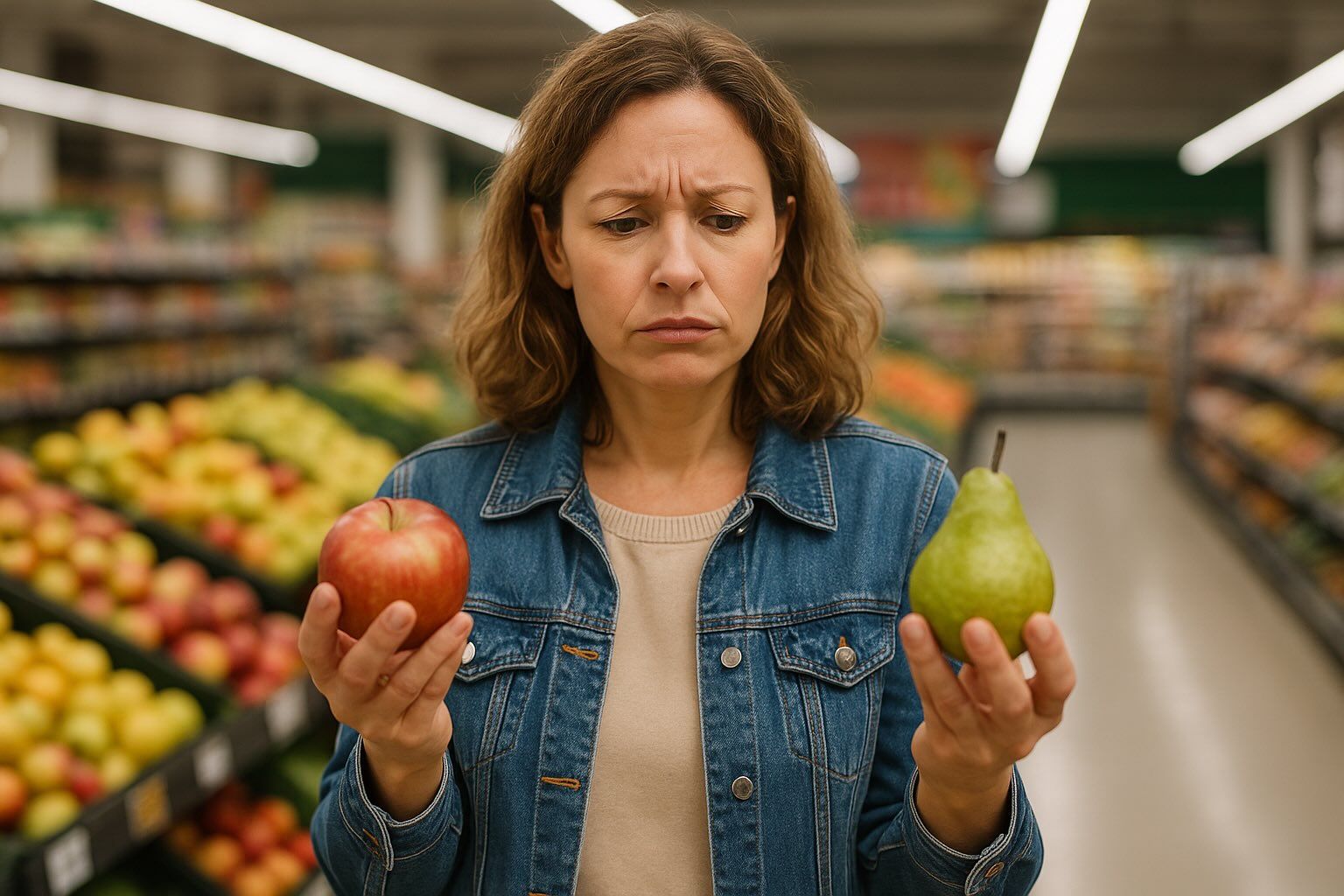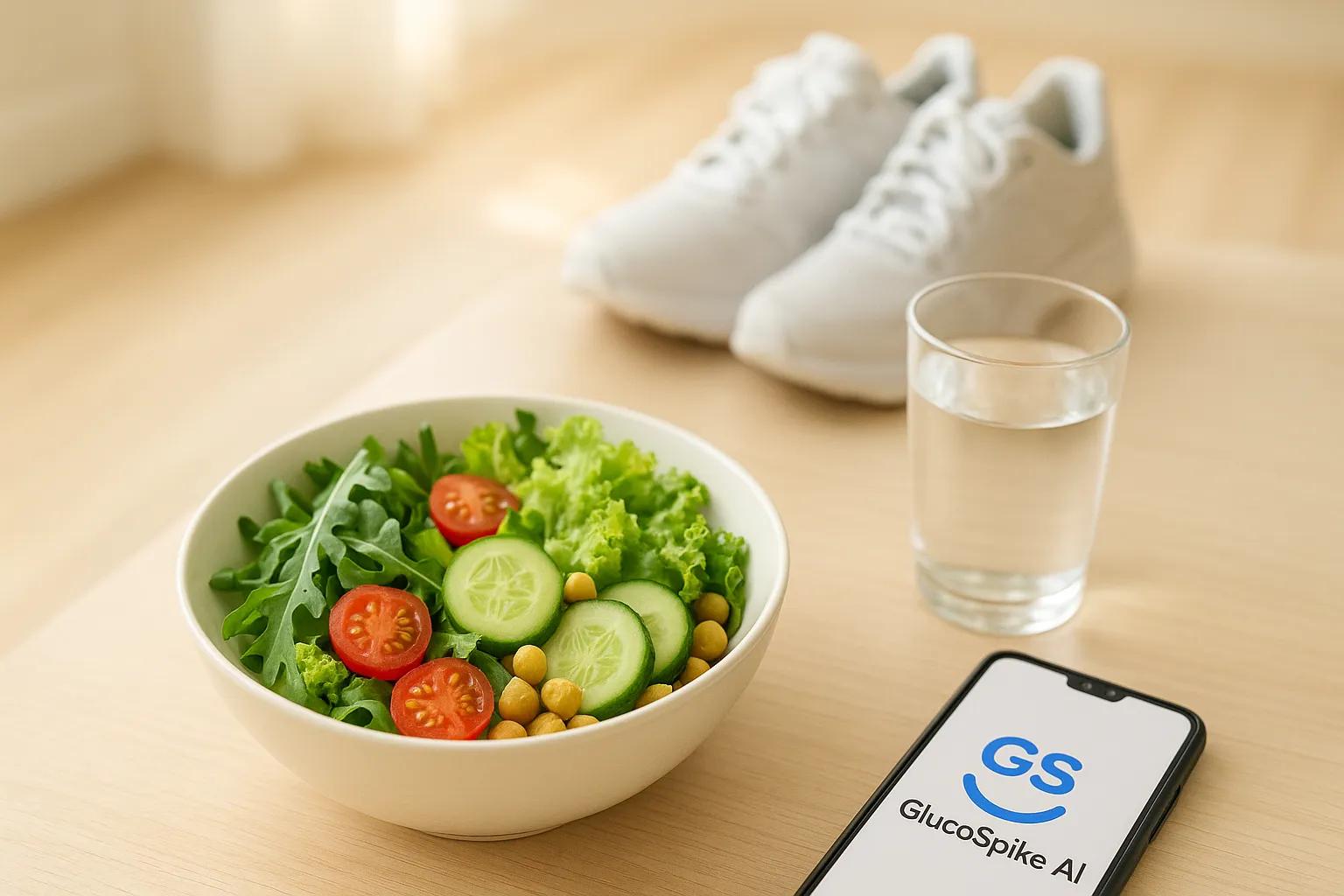What Research Says About Fruit Consumption for Prediabetics and Diabetics
Published on 5/23/2025 · 📖 4 min read

This article is intended for general wellness education only. It is not medical advice. Please consult a healthcare provider for any medical concerns.
Fruit is a key part of many healthy diets—but if you're managing prediabetes or diabetes, you might wonder whether all that natural sugar is safe. The short answer? Whole, fresh fruits—especially those with a low glycemic index (GI)—may support blood sugar wellness when consumed mindfully. Here's what current research suggests.
🍇 1. Whole Fruit Intake and Diabetes Risk
Large-scale studies suggest that higher intake of whole, fresh fruits is associated with a lower risk of developing type 2 diabetes in the general population (PMCID: PMC9941276; Journal of Clinical Endocrinology & Metabolism; PLOS Medicine Study). One study found that for each additional 100 grams of fruit eaten daily, there was a 2.8% lower risk of type 2 diabetes (PMCID: PMC9941276).
However, this protective effect is strongest among people with normal glucose tolerance. The evidence is less conclusive in individuals with prediabetes (PMCID: PMC9941276).
🍏 2. Fruit Consumption in People With Diabetes
Among people already living with diabetes, research shows that higher consumption of fresh fruit may be associated with fewer complications and even lower risk of mortality (PLOS Medicine Study).
In particular, low GI fruits—such as apples, pears, berries, and citrus—may help improve markers like HbA1c, support heart health, and contribute to better blood pressure control when included in a balanced, lower GI eating pattern (PMC3017317).
🍒 3. The Type of Fruit Matters
Not all fruits have the same impact on blood sugar. Lower GI fruits tend to raise blood sugar more slowly, offering a gentler impact on glucose levels (PMC3017317; Healthline).
Some research even shows that certain fruits (like blueberries, grapes, and apples) are linked to a lower risk of type 2 diabetes, while others (like cantaloupe) may be associated with a slightly higher risk (Journal of Clinical Endocrinology & Metabolism).
🧃 4. Fruit Juice and Processed Fruit: A Different Story
While whole fruits offer fiber and slower sugar absorption, juices—yes, even 100% juice—can lead to quicker spikes in blood sugar. Research consistently links higher fruit juice consumption to an increased risk of type 2 diabetes (Journal of Clinical Endocrinology & Metabolism).
Dried fruits and processed options often contain added sugars and lack the fiber of their fresh counterparts. These forms should be limited or enjoyed in very small portions.
🧬 5. Individual Response and Glycemic Control
Studies from both Western and Asian populations suggest that eating whole fruit does not worsen glycemic control in people with diabetes—especially when the focus is on low-GI choices (PMC3017317; Endocrinology and Metabolism).
Thanks to the fiber and cell structure in fresh fruit, sugar is absorbed more gradually, avoiding sharp spikes (PMC3017317).
✅ Summary: What the Research Supports
Higher whole fruit intake may lower diabetes risk (general population)
Low GI fruits may improve blood sugar control in type 2 diabetes
Moderate fruit intake is generally safe for people with diabetes
Fruit juice may increase diabetes risk
Not all fruits have the same effect
🍽 Practical Tips for Including Fruit
- Choose whole, fresh fruits: Whenever possible, opt for whole fruits over juices or dried versions.
- Stick to low-GI options: Apples, berries, oranges, pears, peaches, and cherries are good choices.
- Watch your portions: A small apple or ½ cup of berries is a helpful benchmark.
- Pair fruit with a protein or healthy fat: This can help slow sugar absorption.
- Monitor your response: If you track your glucose, see how specific fruits affect you individually.
Pro Tip: A small apple paired with a handful of salted almonds or cashews can be a blood sugar-friendly snack. The fiber from the apple and healthy fats from the nuts help reduce post-snack glucose spikes.
🧠 Final Takeaway
Moderate consumption of fresh, whole fruits—especially low glycemic index varieties—may support blood sugar wellness for people with prediabetes and diabetes. While fruit juice and highly processed forms are best limited, enjoying fiber-rich fruits in mindful portions can be part of a balanced lifestyle.
This blog is for educational purposes only. It does not substitute for professional medical advice. Always consult a healthcare provider to personalize your diet and lifestyle plan.
Author Bio:
This article was written by a wellness writer focused on evidence-based lifestyle habits that support blood sugar awareness and balance. This is not medical advice.
 GlucoSpike AI
GlucoSpike AI 

